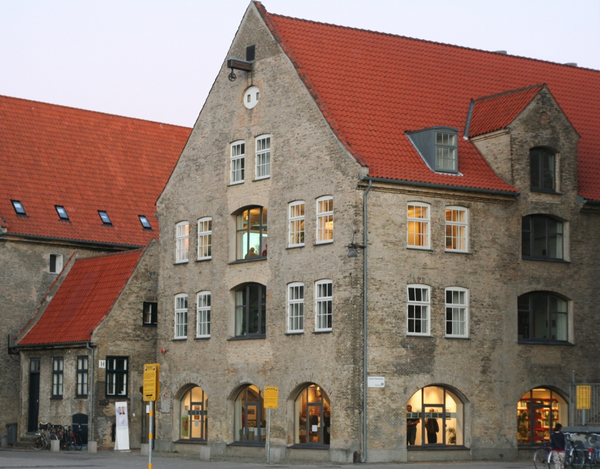Background
The idea of establishing a Danish arctic institute came about already before the 2nd World War. In 1932, geologist and arctic explorer Lauge Koch wrote an article in the paper Berlingske Tidende titled ”Denmark’s great Greenland museum in Copenhagen – a dream to come. But his great vision to establishing a Greenland museum was not realized. Ten years later, in 1942, Eigil Knuth and Ejnar Mikkelsen discussed the idea of establishing an institute focusing on Greenland and other arctic areas. Eigil Knuth wanted to create a place that could become the assembly and concentration of all research as regards Greenland, and he published his visions in the newspaper Information.
The idea was abandoned for a number of years, and not until 1952 was the idea introduced again by Eigil Knuth. Journalist and resistance officer Ebbe Munck, who before the war had guided the Mørkefjordsekspeditions to North East Greenland together with Eigil Knuth, supported the project. Eigil Knuth invited a number of prominent scientists and officials to a meeting in this institute. A working party was settled, the purpose of which was to continue the work establishing this institute. Eske Brun, head of department in the Greenland Ministry, was appointed chairman of the working party. On the 4th of June, 1954, the Arctic Institute was formally established with the purpose of expediting Arctic research.
On the 1st of October, 1954, the Institute was opened by Helge Larsen, representative of The Greenland Society and assistant curator of the ethnographic collection at the National Museum. The first chairman of the governing body was Ejnar Mikkelsen. The governing body also comprised Eske Brun, who was the representative of the prime minister, Arne Noe-Nygaard, representative of the Commission of Scientific Investigations in Greenland, and Ejnar Mikkelsen, representative of the Kraemer Foundation, fisheries biologist Paul M. Hansen and Count Eigil Knuth.
The Institute was domiciled in the house of shipowner Kraemer “Kraemer’s House” in Gentofte. “Kraemer’s House” was placed at disposal for Greenland-related purposes, and also the Greenland Society was domiciled here. Until 1993, these two institutions shared address, but each institution worked in their own field of Denmark’s interests in the Arctic regions. Here, a collection of documents, a library and a collection of photos was established. The tasks of the new Institute were comprehensive: a reference library was to be established, documentation of the Danish expeditions in the Arctic regions was to be collected, supporting Arctic research and promote international relations. In the rules of the Institute, signed by king Frederic the 9th, the relation to Greenland was emphasized:
"The purpose of the Arctic Institute is with special reference to Greenland to expedite the work for the Arctic regions and to communicate the connection between Denmark and foreign countries in all areas relative to the above-mentioned purposes” .
From the very beginning, the Arctic Institute has focused on Danish-Greenlandic relations. A main purpose for the Institute was to collect diaries, fotos and other registrations from the Danish-Greenlandic expeditions as well as other relevant materials that could throw light on the Danish-Greenlandic history. With the establishment of the Arctic Institute, an important place for the preservation of valuable materials from the Danish Arctic expeditions was acquired. Many of the great Greenland explorers of that time have donated book collections, photos and documents to the Institute, thus forming the background for the vast collections of the Institute. Also to-day, the main purpose of the Arctic Institute is to collect, preserve and register materials that concern the Arctic relations. The Institute is runningly receiving new materials to its extensive collections.
From 1954 to 1993, the Arctic Institute was housed in “Kraemer’s House” but in 1993, it chose to move to a new domicile in the former warehouses of the Royal Greenland Trade in Strandgade, where the newly established Danish Polar Centre was domiciled. The same year, the Institute of Eskimology moved into the house, and jointly, the three institutes established the Polar Library. Until the closing down of Danish Polar Centre in 2009, the three institutes worked jointly on a number of projects, among which the Polar Library. In 2010, the Greenland Society moved to Strandgade in order to re-establish the synergy that was previously present in “Kraemer’s House”. The Arctic Institute has developed from exclusively being an archive and preservation institution into to-day to engage itself in communication projects, that in different ways are linked to the archives such as publications, exhibitions, and lectures. Among the newest initiatives of the Institute is the foundation of Research Communication Prize Academicus Arcticus.
Economic Foundation
Originally, the economic foundation was made possible by means of a government subsidy, a yearly operating subsidy from “Shipowner C. Kraemer and Spouse Mathilde Kraemer Greenland Foundation” and support from private foundations. The Kraemer Foundation also placed at disposal ”Kraemer’s House” for the newly established institute, and the Danish state placed the Secretariat for the Commission of Scientific Investigations in Greenland under the Arctic Institute. Further, a number of volunteers has worked hard for the Institute during the years. Since 2010, the economy of the Institute is based on a minor state subsidy, to which kind donations from private foundations are runningly added





